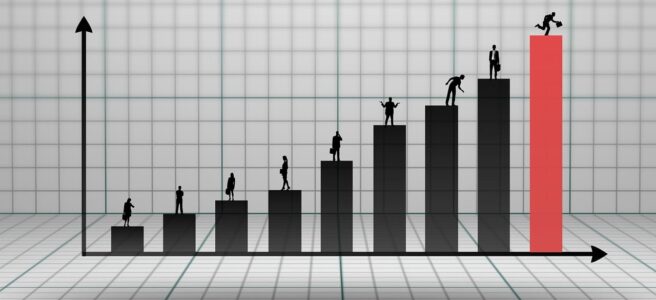In June 2025, the World Economic Forum published the 19th edition of its Global Gender Gap Report, authored by Silja Baller, Yanjun Guo, and Kim Piaget. This landmark publication, based on a dataset covering 148 economies, tracks global progress towards gender parity across four key areas: Economic Participation and Opportunity, Educational Attainment, Health and Survival, and Political Empowerment.
At a time of profound economic transformation, marked by technological disruption, geopolitical instability and demographic shifts, the report positions gender parity not only as a moral goal but also as a strategic lever for national resilience, corporate innovation, and sustainable development.
Global Trends and Key Results
- Overall progress remains sluggish. As of 2025, 68.8% of the global gender gap has been closed, a modest increase of just 0.3 percentage points from 2024. At this rate, it would take 123 years to reach full parity globally.
- Educational and health parity are nearly achieved. Across the 148 countries surveyed, the gender gap in Health and Survival is 96.2% closed and Educational Attainment stands at 95.1%. These areas are no longer the bottlenecks they once were.
- Economic and political gaps persist. The Economic Participation and Opportunity gap is only 61.0% closed, and Political Empowerment remains the most unequal dimension, with just 22.9% of the gap closed.
Regional and Country Performance
- Iceland tops the index for the 16th consecutive year, having closed 92.6% of its overall gender gap. It is the only country to have surpassed the 90% threshold.
- Other top performers include Finland, Norway, New Zealand, Sweden, and the UK, all scoring above 80%. Notably, the Republic of Moldova joins the top 10 for the first time.
- Europe remains dominant, occupying 8 of the top 10 positions, but shows uneven performance across the region.
- Latin America and the Caribbean emerge as leaders in momentum, showing the fastest improvement since 2006 and closing 74.5% of the gap overall.
- At the bottom of the list are Pakistan (56.7%), Sudan (57.0%), and Chad (57.1%), where structural barriers remain deeply entrenched.
Labour Market Dynamics and Career Progression
The report offers an in-depth look into how gender gaps manifest in employment structures:
- Women make up 41.2% of the global workforce but hold only 28.8% of senior leadership positions.
- Even among tertiary-educated professionals, just 29.5% of senior managers are women. The so-called “drop-to-the-top” phenomenon remains pervasive across industries.
- Sectoral imbalances persist. Women are overrepresented in traditionally “people-focused” sectors such as health and education, and underrepresented in high-paying fields like tech, infrastructure, and energy.
- Career progression for women is becoming increasingly non-linear. Women are 55% more likely than men to take a career break (mostly for caregiving) and stay away from the workforce for an average of 19.6 months.
- Younger generations may shift the trend: Women aged 16–28 now represent nearly 46% of the workforce, offering a window of opportunity for reshaping career trajectories if systems can support them.
Legal Frameworks and the Implementation Gap
The report draws attention to an important structural issue: while many countries have gender-equal laws on paper, implementation often lags:
- Using new indicators from the World Bank’s Women, Business and the Law dataset, the authors highlight a pervasive “implementation gap” across most economies.
- Only five countries—including Bangladesh, Canada, Jordan, the UK and Belize—score higher in implementation than in legal provisions. In many cases, well-designed laws lack the institutional frameworks, budgets or enforcement mechanisms to be effective.
Trade, Technology and Global Risks
A particularly compelling section of the report explores how geoeconomic shifts, especially changes in trade flows, may affect women:
- Women in low- and middle-income countries have benefited from globalization, entering formal jobs in export-oriented sectors. But with rising trade fragmentation, these gains are at risk.
- In lower-income countries, up to 72% of employed women work in tradable sectors, making them disproportionately vulnerable to trade shocks and automation.
- The report warns that a 1% drop in global trade volumes could cost 4.5 million women their jobs, underscoring the need for gender-sensitive trade policies.
Why This Matters for Corporate Governance
For internal auditors, risk managers, and corporate governance professionals, the findings of the Global Gender Gap Report 2025 have direct implications:
- Diverse leadership leads to better outcomes: Innovation, profitability and talent retention improve when gender balance exists in decision-making bodies.
- Workforce planning must adapt to non-linear careers, especially by improving return-to-work opportunities and valuing experience gained across sectors.
- Legal compliance is not enough: Companies must monitor whether policies translate into practice, for example, whether pay equity audits lead to pay equity adjustments.
- External risks are internal risks: Geoeconomic disruptions, if not addressed with gender-sensitive strategies, can destabilize the entire workforce, especially in globally connected supply chains.
Final Note
The Global Gender Gap Report 2025 offers a sobering yet actionable view of where the world stands in terms of gender equality. While the direction is positive, the pace is far too slow to meet the Sustainable Development Goals in time.
The report is available on the World Economic Forum’s website. You can access the full publication here.

